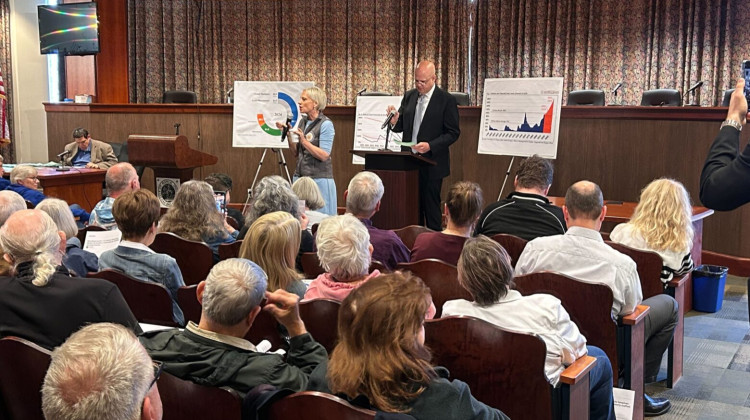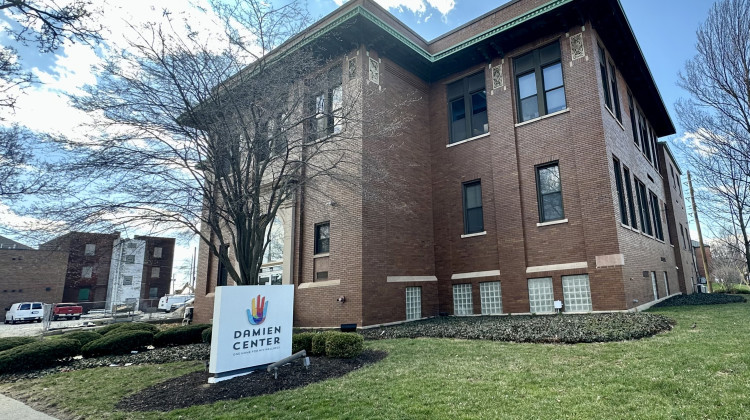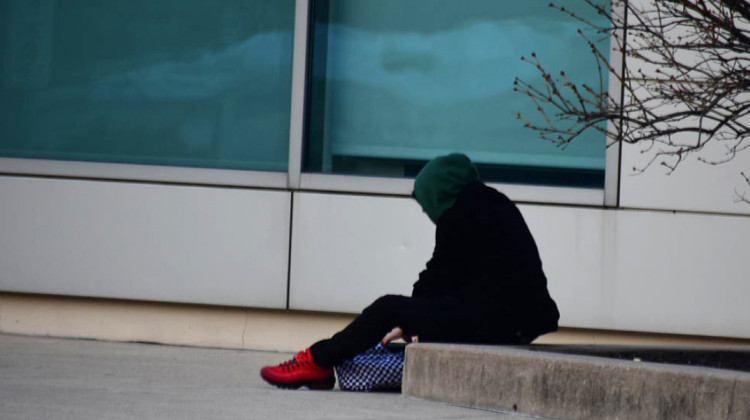
Though it’s not always possible to directly attribute weather patterns to climate change, climate scientists can say how likely it is that some weather patterns were made worse by climate change. This is a map of the U.S. showing the number of warm nights climate change made at least twice as likely. Parts of Indiana range between two to four nights.
Courtesy Of Climate CentralSummer nights across the U.S. are warming twice as fast as summer days — and they can be dangerous to your health. That’s according to the independent researching and reporting collaboration Climate Central.
In most of the Indiana cities it studied, the average summer low temperatures have warmed by at least 1 degree since 1970. Indianapolis had the biggest increase where average summer low temps have gone up by more than 3 degrees.
Beth Hall directs the Indiana State Climate Office and the Midwestern Regional Climate Center. She said we generally think of the dangers of summer heat during the day — but changes in those overnight lows are a greater concern with climate change.
“Historically, that's when the temperatures cool off. That's when we could open the windows at night and we get a break from those oppressive daytime temperatures," Hall said.
When we don't get that break, Hall said it can put a lot of stress on our bodies. It can affect how well we sleep.
“We might be sweating more because that is our natural mechanism to try and cool off. So we could be losing more water that will make us more dehydrated over the nighttime hours," she said.
Join the conversation and sign up for the Indiana Two-Way. Text "Indiana" to 73224. Your comments and questions in response to our weekly text help us find the answers you need on statewide issues, including this series on climate change and solutions.
Warm nighttime temperatures are especially dangerous for people vulnerable to extreme heat — like lower-income residents, young children, seniors, people with chronic illnesses and those who work outside.
Running your air conditioner more often at night can also drive up your utility bill. When coal and natural gas is used to power that A/C, it can lead to even more of the greenhouse gas emissions that contribute to climate change.
Some residents face disproportionate exposure to heat. Large cities like Indianapolis have a lot of hard surfaces that absorb heat and less tree cover, which can make them much hotter than the surrounding area.
Historically Black neighborhoods are also less likely to have tree cover due to racist practices like redlining.
Contact reporter Rebecca at rthiele@iu.edu or follow her on Twitter at @beckythiele.
 DONATE
DONATE






 Support WFYI. We can't do it without you.
Support WFYI. We can't do it without you.